IV A Gruelling Walk
Most of the people intending to sail away from Galway on the brig St. John in 1849 would have had to walk to the port. The majority of them would have had no previous experience of a sea voyage, but the St. John was now their only hope of salvation. During the journey from County Clare and Connemara, these people experienced the full devastation of famine and disease. Epidemics of typhus and relapsing fever raged and were carried along by those fleeing stricken areas. Many deaths were caused by outbreaks of dysentery, diarrhoea, measles and tuberculosis, as malnutrition had weakened the immune systems of the starving. The stench of blight and death clung to the clothes of these wretched people. The land of their birth, and that of their forefathers, had now forsaken them, allowing death to reap a rich harvest of corpses across the country. There was no age limit; young and old perished together. Their back-breaking toil had been in vain, their only hope of salvation was relief work, the workhouse or the coffin ships. Whole families grandparents, fathers, mothers and children trudged along the old dirt roads towards the harbour towns. Scourged by hunger, bare-footed and dressed in rags, they wondered why this dreaded curse had been inflicted upon them, many tilting their heads towards the sky and calling out to heaven for answers.

Humane Society Medal awarded after the sinking of the
Ocean Monarch off Liverpool.
(The Illustrated London News, 28-10-1848)
The scale of exodus was enormous, with thousands making this same journey throughout Ireland. Hun-dreds died along the way, and were left lying in ditches along the side of the road, their grass-stained mouths bearing testament to their desperation. One particular case was that of Pat and Bridget Duffy, a brother and sister who lived near Spiddal in County Galway. The only food they could find during the days leading up to their deaths, if one could call it food, was sea grass and sea weed.
There was little hope of finding sustenance during the exhausting walk to the ports, so those fleeing carried their own meagre supplies with them. Any possessions of value had already been exchanged for food, or sold off for the price of a ticket to America or Canada. Some portable possessions were taken and used to barter along the way. In towns and villages the inhabitants shunned them out of fear of disease, so terrified were they by horrific sights they had witnessed. Compassion for the poor and destitute was tenuous; people were so terrified of contracting disease that, having refused a beggar assistance, they would label them false and better off than they claimed just to assuage their own consciences.
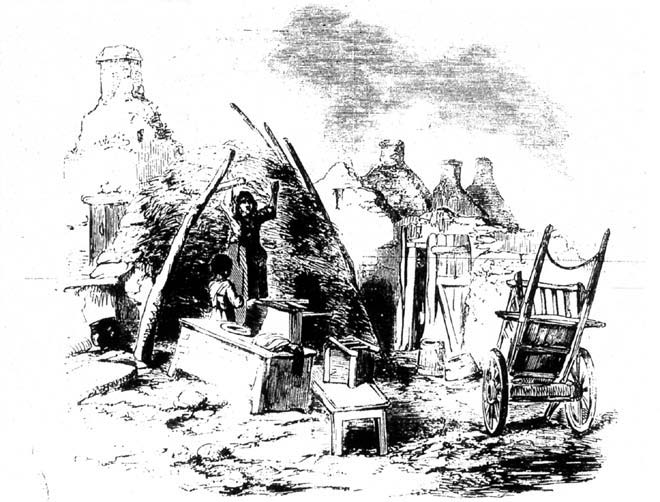
Spailpn of Tim Downs at Dunmore in County Clare.
(The Illustrated London News, 22-12-1849)
While Galway was by no means the worst hit area during the famine, it did suffer its share of disease, starvation and death. It was once said of Rahoon that no language could express the ghastly suffering of the poor and destitute of this district during the famine. It was reported that, On every side nothing but cries of death and starvation are heard. The poor are literally dropping on the public highways from hunger. Similar unforgettable scenes of human misery were also witnessed in the surrounding areas. There were reports of the bodies of women and children lying in ditches along the Dangan and Barna roads. One such casualty was Mark Murphy, who attempted to walk from Spiddal to Galway in January 1848. He was in such a weakened state that death overcame him on the road near Barna. This is the only information available about this unfortunate man.
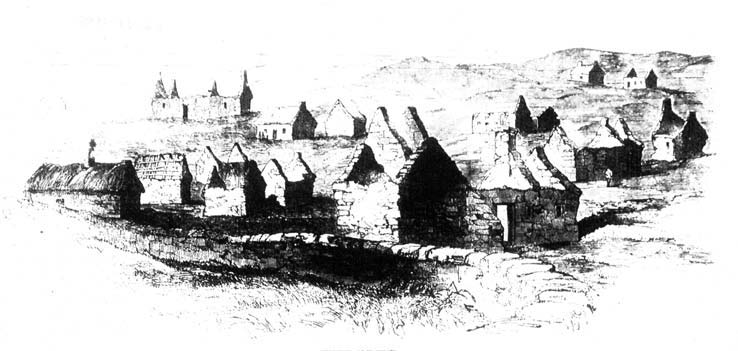 Village on Movren, County Clare.
Village on Movren, County Clare.
(The Illustrated London News, 22-12-1849)
Patrick and Mary Sweeney and their eleven children made this journey in early September 1849 to secure passage on the brig St. John . They were from Lettercallow in Connemara. It is believed that they set out on foot, and if so, it would have been a long and gruelling walk. Their journey to the famine ship would probably have begun about a week before the sailing. The Sweeney family had already survived the worst years of the famine, but with so much hardship behind them they had probably begun to doubt the famine would ever end. Patrick obviously felt that the only future for him and his family lay across the ocean, in America. He hoped to find profitable work in Boston. The fare for the entire family would have left Patrick and Mary with very little money to buy food along the way. Using a little imagination, one can picture the youngest member of the Sweeney family, three-year-old Agnes, hitching a ride on her fathers back for at least part of the journey. The beautiful countryside that surrounded them was ravaged by famine and death.
The Sweeney familys journey to the brig St. John took them along the old coast road, through the villages of Spiddal, Barna and Salthill. When they finally arrived in Galway, they found that accommodation was scarce due to the influx of so many other famine refugees. Of course the locals fear of contracting disease from these refugees added to the scarcity of accommodation.
The Sweeney family avoided the workhouse on Newcastle Road. It had opened in March 1842, and was designed to cater for 800 inmates. But by January 1847, 1,143 refugees were being housed there and the number was growing all the time. During the famine, the number of deaths recorded in this establishment each week averaged between twenty-five and thirty. Families were torn apart upon entry to the workhouse, husbands separated from their wives, and children from their parents. For this reason the workhouse was not an option for Patrick and his family; they wished to stay together regardless of the consequences.
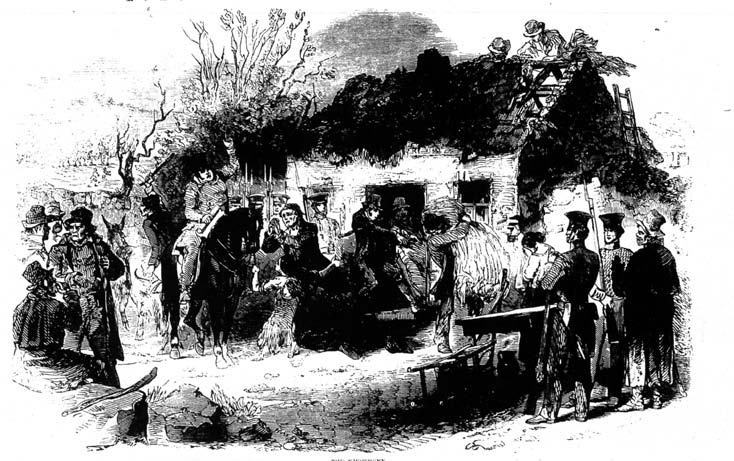 The eviction of tenants.
The eviction of tenants.
(The Illustrated London News, 22-12-1849)
As a port town, Galway witnessed a daily influx of poor, destitute and emaciated refugees of all ages. It was only those who had absolutely nothing, were starving and half naked, who made their way to the work-house. One little six-year-old girl, Celia Griffin from Corandulla, near Ross, arrived in Galway along with her family. All of them were in a pitiable condition. Celia survived for a number of weeks on the streets until she was finally given shelter in the Presentation convent. Although attempts were made to feed her it was too late, and within days her little body finally succumbed to the effects of starvation. Celia was just one of thousands of children who died without understanding why.
In the small parish of Bohermore, where the skipper of the brig St. John , Captain Martin Oliver, was living, an average of five people perished every day. A local priest reported that people were so hungry that they had resorted to feeding on nettles and other wild plants. Closer to Galway port, the Claddagh did not escape the clutches of the famine even though it was a fishing village. Cholera struck the Claddagh in 1849, making no distinction between young or old. So many children died that it proved too difficult to record all of their names. The Dominican cemetery book simply kept record of the number of children who died on a particular day.








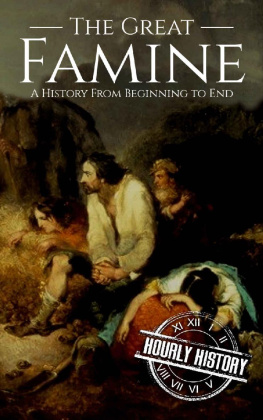
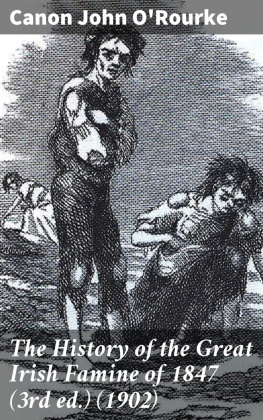

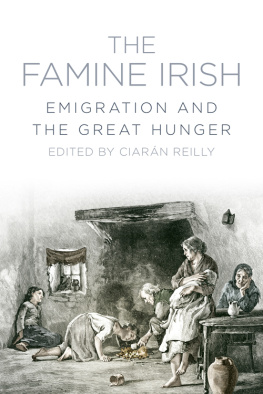
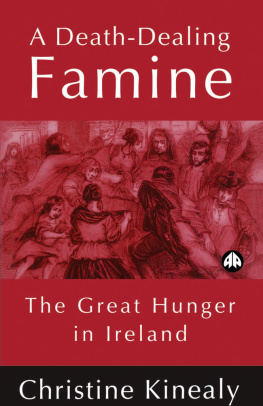
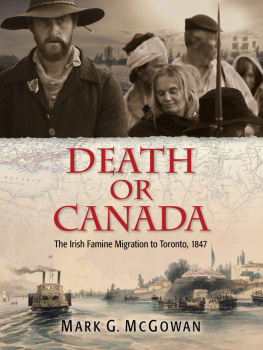



 Village on Movren, County Clare.
Village on Movren, County Clare. The eviction of tenants.
The eviction of tenants.